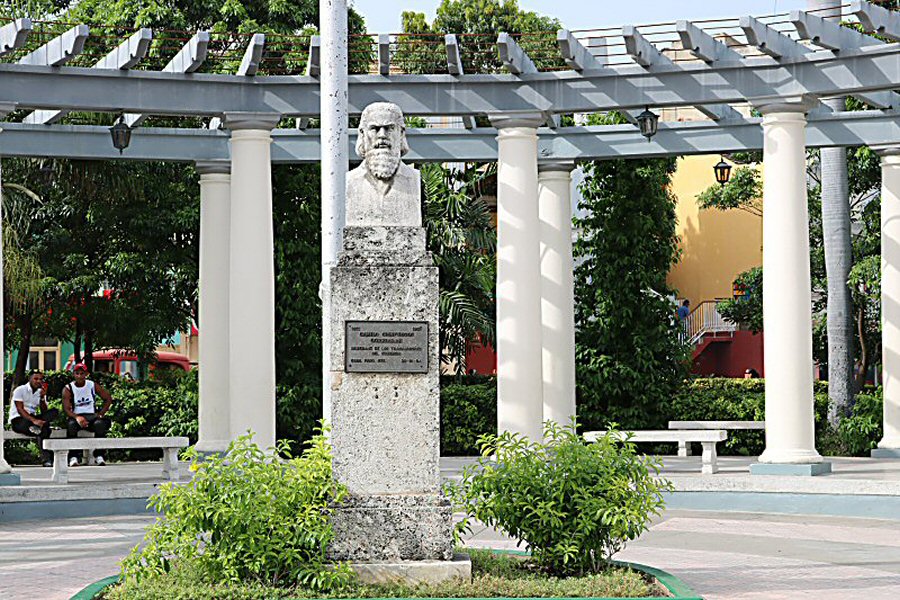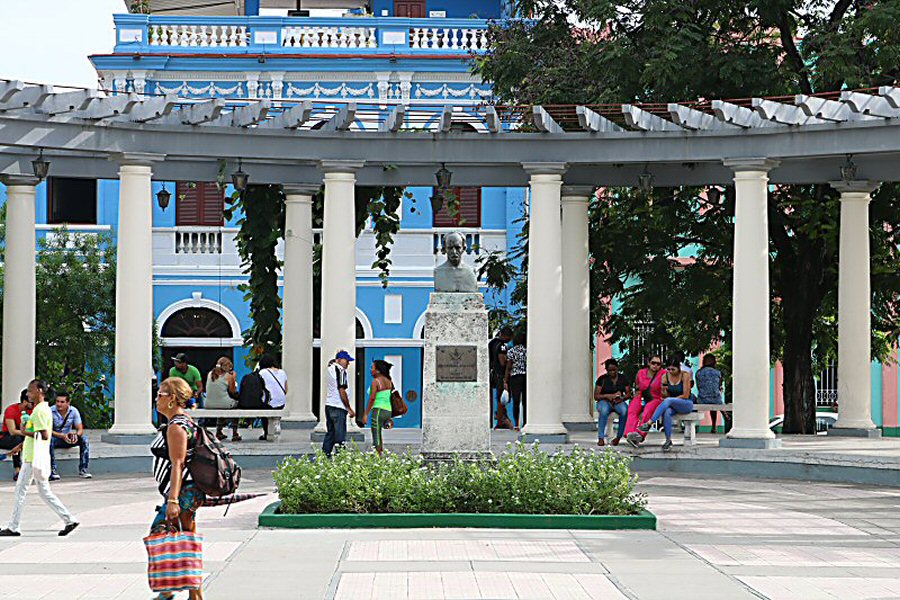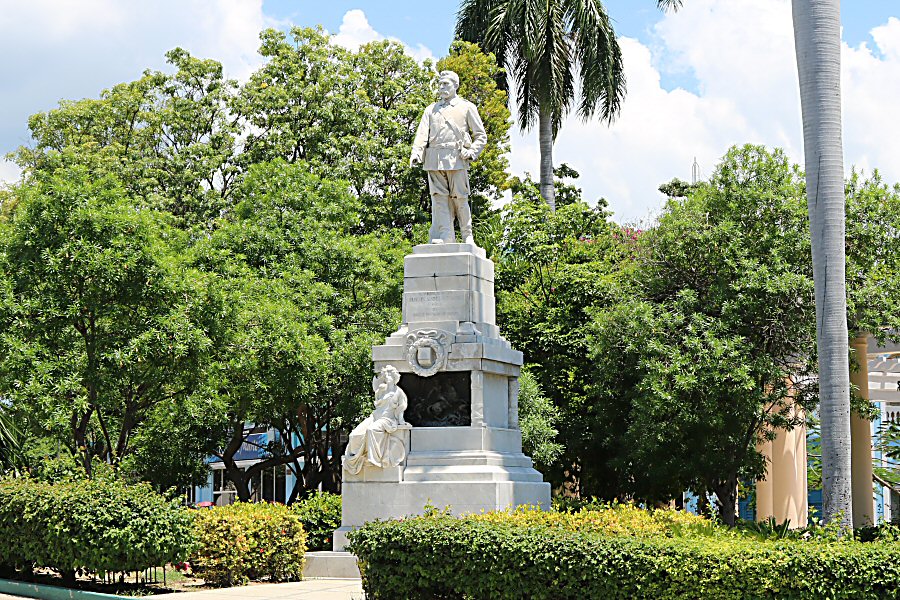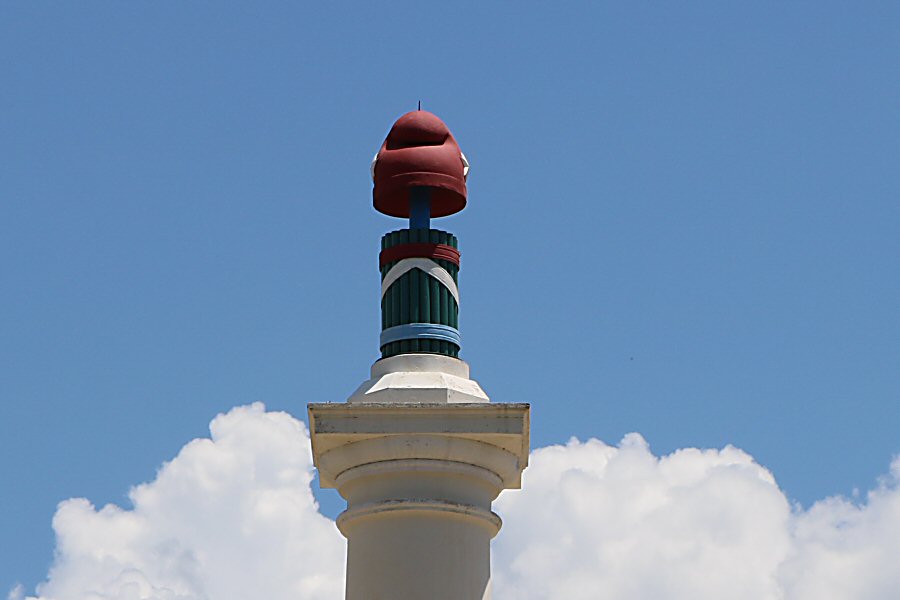Localization
Plaza de Marte is bordered by Francisco Vicente Aguilera, Byamao, Paraiso and Perez Carbó streets.
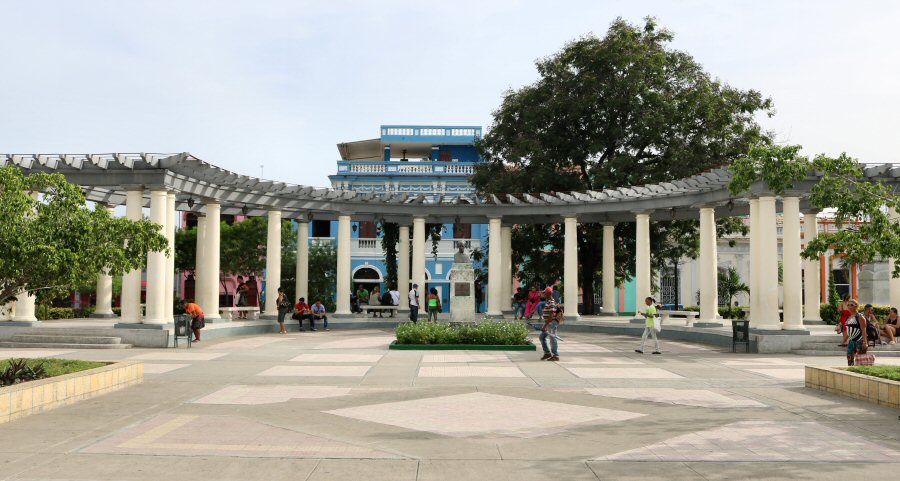

Heredia and Aguilera streets, together with Céspedes Park and Plaza de Marte constitute an integral part of the city, at the same time also being the heart of the lovely city.
The emerging of Plaza de Marte as the consequence of the development of the eastern part of the city, dates back to the end of the 18th century. It was a terraced area with indistinct borders where the troops of the metropolis were training. At that time its name was Campo de Marte. It was denominated in allusion to the God of the War in the Greek mythology.
In the beginning of the 19th century the square became a ground where the convicts were executed by the Spanish. The bad reputation of the place infused fear to the neighbor houses, so that it was discarded to use this place for such a purpose in 1833.
In 1860 it was conformed to a square, and later a fountain was placed with the Goddess Minerva’s statue (Minerva was the Roman goddess of wisdom and strategic warfare, and the sponsor of arts, trade, and strategy). The first celebration of October 10 in Santiago de Cuba took place in this square in 1868, and the fountain became the symbol of the Republic. Although it was given the name of Plaza de la Libertad in 1899, the Santiagueros continued to call it Plaza de Marte.
 In 1902 the fountain with the Minerva statue was disassembled, and as a homage to the Liberation Army (Ejército Libertador) the 20 meters high column of veterans (Columna de Veteranos) was erected in the same place. The smurf-like cap at its summit is the gorro frigio. This tall cap twisted at the tip takes its name from the inhabitants of ancient Phrygia. According to the legend, it was devised by the Phrygian King Midas to hide his donkey ears that had been imposed on him by the God Apollo as punishment. Meanwhile, such a cap was given to the slaves in ancient Rome when they were granted their freedom. It was the symbol of the independence and sovereignty of the republic.
In 1902 the fountain with the Minerva statue was disassembled, and as a homage to the Liberation Army (Ejército Libertador) the 20 meters high column of veterans (Columna de Veteranos) was erected in the same place. The smurf-like cap at its summit is the gorro frigio. This tall cap twisted at the tip takes its name from the inhabitants of ancient Phrygia. According to the legend, it was devised by the Phrygian King Midas to hide his donkey ears that had been imposed on him by the God Apollo as punishment. Meanwhile, such a cap was given to the slaves in ancient Rome when they were granted their freedom. It was the symbol of the independence and sovereignty of the republic.In 1907, after the installation of the miniature railway and the marina, it became a point of attraction for the population of that time, and several constructions such as trade centers, hotels, a hospital and a school were inaugurated around the plaza; some of them still survived. In 1908 the square was divided in two areas by the tramway. In 1940s two large semicircular pergolas on the north and south wings were incorporated into the plaza, where two huge, polished granite platforms surpass the floor, so that the square acquired its current neoclassicist image.
In 1959, in homage to heroes of the independence, the statues of Camilo Cienfuegos Gorriarán, José Martí and Orlando Fernández Montes de Oca were placed inside the square, in front of the arbors. Four immense bronze cannons are placed around the column of the veterans.
This popular place that looks like a park with the high trees surrounding the square, is one of the favorite places of the residents of Santiago de Cuba to rest under the shade of the arbors and the trees and to get into social contact with each other. Additionally, it is one of the wireless zones that exist in the city. Despite the intense vehicular flow around the plaza, it constitutes an enjoyable place for the pedestrians due to the many cafes and restaurants nearby. On Saturday nights the plaza is closed to traffic, and the street peddlers rounding the plaza, sell delicious food, desserts, cakes etc.
monument of Pedro Perucho Figueredo Cisneros
 La Plaza de Marte constitutes an exceptional space for the Chore Santiaguero, because it is a privileged location due to its history and the diversity of the monuments. Around the square there are white marble statues of two famous figures: Pedro Perucho Figueredo Cisneros (author of the lyrics and melody of La
Bayamesa, a warrior march that became the Cuban national anthem) and Francisco Sánchez Hechavarría (Major General of the Liberation Army, and also the first governor of the Oriente province during the Republic).
La Plaza de Marte constitutes an exceptional space for the Chore Santiaguero, because it is a privileged location due to its history and the diversity of the monuments. Around the square there are white marble statues of two famous figures: Pedro Perucho Figueredo Cisneros (author of the lyrics and melody of La
Bayamesa, a warrior march that became the Cuban national anthem) and Francisco Sánchez Hechavarría (Major General of the Liberation Army, and also the first governor of the Oriente province during the Republic).

